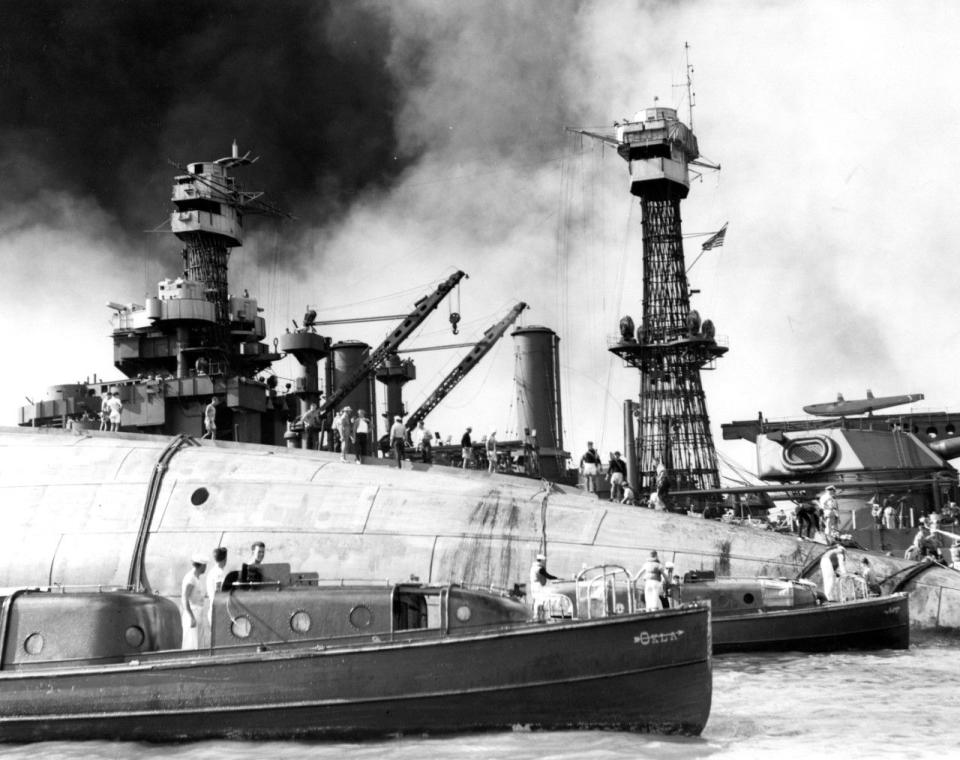Aberdeen Pearl Harbor hero to be buried in Arlington National Cemetery
A Navy electrician who died aboard the USS Oklahoma during the Dec. 7, 1941, attack on Pearl Harbor, will be coming home to be buried in Arlington National Cemetery.
Albert Walter Whitson, from Aberdeen, was only 22-years-old when he died aboard the 27,500-ton Nevada class battleship.
Electrician’s Mate 3rd Class Albert Whitson was born July 23, 1919, in Aberdeen and enlisted in Seattle on July 13, 1937.
As an electrician, Whitson wired and repaired a ships’ electrical systems. He also operated and maintained electrical motors, generators and alternators, along with charging and maintaining batteries, gyrocompass, fire control and other circuitry.
According to the Official Military Personnel File, Whitson has been awarded the Purple Heart Medal, Combat Action Ribbon, Good Conduct Medal, American Defense Service Medal with a Fleet Clasp, Asiatic-Pacific Campaign Medal with a Bronze Star, World War II Victory Medal and the American Campaign Medal.
On Dec. 7, 1941, 2,403 people were killed in a surprise military strike by the Imperial Japanese Navy Air Service at Pearl Harbor, a naval base in Honolulu, Hawaii.
Five torpedoes struck the USS Oklahoma, when it capsized and killed 429.
By 2015, 388 service members were unaccounted for.
In April 2015, the unidentified remains of the crewmembers of the Oklahoma were exhumed for DNA analysis and by 2021, the remains of 355 sailors and Marines were identified.
The USS Oklahoma was commissioned in Philadelphia on May 2, 1916, with the Assistant Secretary of the Navy, Franklin D. Roosevelt attending.
As president, Roosevelt would later declare war on Japan in 1941 after the attack on Pearl Harbor.
In 1933, the USS Oklahoma participated in civil defense drills in Tacoma, where the ship’s generators provided all electrical power to the city for 24 hours.
When the attack began just before 8 a.m., most of the crew were sleeping in their racks below deck and never made it up to the main deck.
At around 7:55 a.m., the first wave of Japanese aircraft struck the Oklahoma with three aerial torpedoes.
As the Oklahoma capsized, Japanese planes strafed the deck with machine gunfire.
Six more torpedoes struck the Oklahoma, tearing open the port side.
Within 15 minutes of the first torpedo, the Oklahoma rolled completely over, trapping crewmembers inside.
Men trapped inside started banging on the bulkhead to get the attention of passing boats.
On Dec. 8 and 9, after cutting holes in the exposed bottom of the ship, 32 men were pulled out alive.
Banging continued through Dec. 10, but by then, nothing could be done, as the sound was coming from below the waterline and the Sailors standing watch over the Oklahoma could only wait and listen until the banging stopped.


